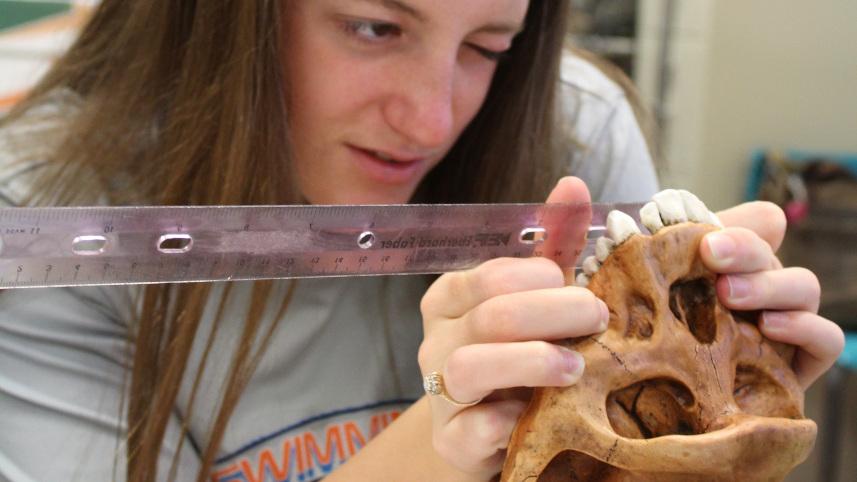Evolution education has always been at the heart of NCSE’s efforts to safeguard the integrity of science education. As a former zoologist and seasoned biology educator, I affirm that no statement has ever been more accurate than the one offered by Theodosius Dobzhansky: “Nothing in biology makes sense except in the light of evolution.” I’d argue this to my grave, and as someone who taught for years in Kansas high schools, I’ve had to defend it more than once.
That is why I am so excited to introduce the first-ever NCSE evolution lesson sets, now available for use in high school biology classrooms everywhere! The Supporting Teachers team has worked alongside our Teacher Ambassadors from all over the US for the past two years to develop these NGSS-aligned, inquiry-based lesson sets. Each was a true labor of love for the team and me. Allow me to introduce you to them all.
With a deserved shout-out to Charles Darwin in its title, our first lesson set focuses on speciation. Students often enter the classroom with the misunderstanding that evolutionary processes cannot result in significant changes, such as the emergence of a new species. Beginning with the still-developing story of Titanoboa cerrejonensis and ending with a familiar classroom pet, the ball python (Python regius), students explore how climate, survival instincts, and genetics drove the evolution of squamates (scaled lizards and reptiles), resulting in the vast array of species recognized today. Additionally, students engage with evidence that is still a significant focus of herpetologists around the world today as they try to answer the question: Why did snakes lose their limbs anyway?
Continuing our discussion of speciation, the second lesson set focuses on using literal hard evidence — fossils — to understand how significant ecological change can result in dramatic speciation events when a species has enough genetic variation in its population. To do this, students examine the evolution of horses to determine how equids went from pint-sized jungle organisms to the massive plains-dwelling modern horses eventually domesticated by humans. In the process, the fact that populations, not individuals, are what evolve is emphasized to counter a common misconception.
Using the artificial and natural selection of organisms, the third lesson set focuses on evolutionary fitness through the lens of phylogenetic tree-thinking. Fitness is often misconstrued in terms of becoming bigger, better, faster, and stronger. But without human interference, evolution doesn’t proceed in a planned direction. To understand these ideas, students focus first on dogs—which humans have been genetically modifying for 12,000 years — in an attempt to build a simple cladogram. Then they evaluate evolutionary fitness in both domesticated and wild species. Finally, to understand how evolution is not a linear, directional process, students compare and contrast two very similar groups — marsupial and placental mammals. By looking at the karyotypes of these organisms, students will be able to develop evidence-supported claims about how such similar organisms could evolve in completely different locations on the planet to fill the same ecological niches, while also learning how to build their own phylogenetic trees in the process.
One of the most neglected areas of biology in high school classrooms is that of our own origins — human evolution. NCSE hopes that biology teachers everywhere, equipped with the fourth lesson set, will embrace the inherent curiosity students have about their own place in the universe and make this lesson a central piece in their evolution sequence. Students begin by evaluating stereotypes associated with our hominid ancestors, then compare and contrast a series of hominid skulls and skeletal systems to consider one of the most asked questions of all time: What makes us human? And no student will complete these lessons without fully understanding why “if humans evolved from primates, why are there still primates?” is such a misguided question.
The threat to biodiversity on our planet due to human activity is one of the main topics in the fifth lesson set. Students look at major extinction events throughout geological time to understand the relationships between evolution, extinction, and the survival of species. Additionally, the exploration of deep time through extinction events also helps to reinforce how the fossil record provides a vast array of evidence for evolution. Ending with a ray of hope, students will explore possible solutions to mitigate humans’ impact on today’s organisms.
There you have them; the complete evolution lesson sets currently available! Misconceptions about evolution still permeate many of today’s classrooms, so these lesson sets were designed to target the most common among them. Each lesson set guides students as they dive into research and use evidence collected from numerous biological experts — some still currently conducting research in the field. Additionally, each lesson set uses sound pedagogical teaching tools to reinforce student learning throughout.
If you’re a teacher, we’d love to hear feedback on any of our lessons. If you plan to use the new evolution lesson sets in your classroom in the fall of 2022, please let us know.


